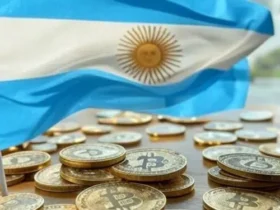Today, October 31, 2025, marks 17 years since Satoshi Nakamoto, whose identity is still a mystery, published a nine-page document titled “Bitcoin: A Peer-to-Peer Electronic Cash System.”
It was Halloween 2008 and The world was going through the worst financial crisis since the Great Depression.. As banks collapsed and governments bailed out Wall Street giants with millions of dollars, the housing crisis had eroded confidence in the global financial system.
In the midst of that chaos, Satoshi presented what many consider the greatest declaration of independence against the centralized control of money: the whitepaper —or white paper— of Bitcoin. His vision involved irreversible transactions without intermediaries, so he created a system where trust is based on mathematics, not people.
The document describe how it was possible to build a decentralized digital money system that did not depend on any central authority. There, the concept of a peer-to-peer network that records all transactions in a public and shared database via blockchain is introduced for the first time.
Satoshi proposed a consensus mechanism called proof of work (proof of work), through which participants—called miners—validate transactions and are rewarded with new units of bitcoin.
Barely Two months after the publication of the whitepaper, on January 3, 2009, the first block was mined of the network, known as genesis block. With it, bitcoin was officially born, marking the beginning of a new era in the history of money.
From a whitepaper to becoming a global asset: the case of Bitcoin
The early years of bitcoin were about experimentation. In 2010, when its value was just a fraction of a cent, programmer Laszlo Hanyecz starred in one of the most memorable anecdotes among bitcoiners by spending 10,000 BTC on two Papa John’s pizzas.
Today, those currencies would exceed $1.09 billion. That episode showed that bitcoin (BTC) could function as tangible money and gave rise to the anniversary that is celebrated annually as Bitcoin Pizza Day, which of course is always remembered in CriptoNoticias.
The truth is that, over the years, BTC continued to mature. The first halving, in 2012, halved the reward for mining, thus reinforcing its scarcity. There will only be 21 million coins when they are finished being issued, something planned for the year 2140.
Later in the 2020s, bitcoin reached a tipping point: it was no longer a niche experiment and consolidated itself as a highly valued financial instrument among specialists.
In 2021, El Salvador made history by adopting BTC as legal tender, promoting financial inclusion among several unbanked populations. The boom continued in 2024, when the SEC approved spot bitcoin ETFs in the United States.
Currently, institutional adoption is growing. Several companies have made bitcoin a pillar of their corporate treasuriesseeing it as a safeguard against inflation and monetary devaluation. Leading such a trend is Strategy, the company founded by Michael Saylor, which at the end of October 2025 owns more than 640,000 BTC.
At 17 years old, you could say that bitcoin is entering adulthood. It is no longer a misunderstood rebel, but the pillar of a digital economy that integrates artificial intelligence, decentralized finance (DeFi) and tokenized assets.
Satoshi disappeared in 2011, leaving one million BTC intact, but his legacy lives on in every transaction, in every ETF, and in every nation that adopts him since the publication of his whitepaper.






Leave a Reply